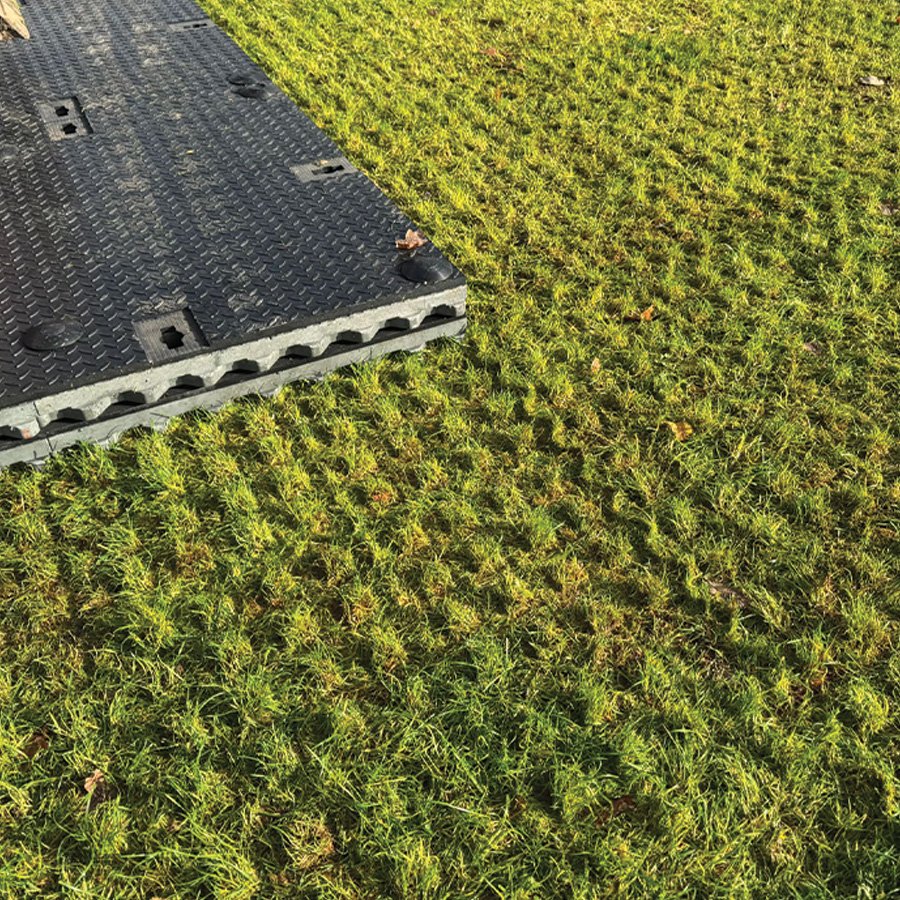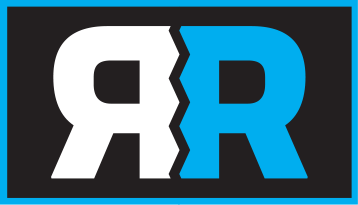A Rolling Road Q&A with our Operations Director, Gavin Iredale

UIS Rolling Road is the ultimate temporary road and access solution which is a real game-changer when it comes to how we view temporary trackway solutions. Produced from recycled materials, UIS Rolling Road is engineered with a dual focus on customer convenience and environmental sustainability, ensure top-notch performance and eco-friendly innovation that will help change the way customers use temporary trackway solutions moving forward.
What drove UIS to create this product was a number of factors. Temporary trackway solutions are required for various sectors in the UK, including utilities and construction, outdoor events, festivals, forestry and military operations. However, the current solutions out on the market are facing a significant shortage due to the high demand, leaving many projects without access to necessary infrastructure. Additionally, many of these options are not environmentally friendly, contributing to increased carbon footprints and ecological disruption. Furthermore, they often fail to meet the specific requirements of various applications, resulting in suboptimal performance and reliability issues. This combination of scarcity, environmental impact and unsuitability underscores the urgent need for more sustainable and versatile trackway solutions, which is where UIS Rolling Road enters the equation…
Yes, sustainability was a key priority from day one of developing the UIS Rolling Road system. At UIS, we recognise that innovation isn’t just about performance; it’s about creating smarter, more responsible solutions that work for both people and the planet.
From the outset, the design focused on durability, reusability, and waste reduction. The components are built to last through repeated deployments, reducing the need for disposable materials often seen with traditional temporary trackway setups. Where possible, we’ve selected materials and manufacturing methods that support a lower carbon footprint, and because the system is lightweight and compact for transport, it also helps reduce emissions associated with logistics.
We’re proud that UIS Rolling Road doesn’t just improve safety, it supports our clients in meeting their environmental and social responsibility goals.
While the UIS Rolling Road shines on-site for its performance and adaptability, there’s a lot of thought and planning that happens behind the scenes to keep it running smoothly, from storage and transport to retrieval and maintenance.
When not in use, UIS Rolling Road units are stored at our dedicated facility in Lancashire, where they’re carefully inspected, cleaned, and prepared for their next deployment. The system is modular and compact, which means it can be neatly stored and stacked, reducing space requirements and making logistics more efficient.
For transportation, we offer fully managed delivery services. Thanks to its lightweight and modular design, UIS Rolling Road can be loaded and offloaded quickly, minimising setup time on-site. Whether it’s being delivered directly to a depot or to a live job site, our team ensures the process is seamless and on schedule.
Once a project is complete, the UIS Rolling Road units are collected, returned to our facility, and go through a post-use inspection process. We check for any wear or damage, carry out any necessary maintenance, and ensure each component is fully operational and safe for future use. This process helps extend the life of the system, ensures ongoing reliability, and supports our sustainability goals by maximising reusability.
From start to finish, we take care of the logistics so our clients can focus on what matters most – delivering safe, efficient projects with confidence."
“Leaving nothing behind” isn’t just a tagline, it’s a key advantage of the UIS Rolling Road system, especially when you consider the environmental and operational impact of traditional temporary trackway solutions.
Conventional methods such as wooden bogmats and aluminium panels have several negative environmental impacts, such as:
- Soil Contamination
Wooden bogmats, often used in construction and utility projects, can absorb contaminants like diesel, hydraulic fluids, and other site-related spills. Once saturated, the mats act like sponges, slowly leaching these harmful substances into the soil over time. This not only damages the immediate area but can also lead to longer-term soil degradation, affecting future land use and biodiversity. - Ground Sterilisation
Extended use of wooden bogmats or solid aluminium panels can suffocate the ground beneath. The lack of light, air, and water penetration inhibits natural biological activity in the soil, effectively "killing" the top layer of the ground. This can delay natural recovery, particularly in environmentally sensitive or protected areas. - End-of-Life Disposal Issues
Once contaminated, wooden mats are difficult to clean and are often discarded as hazardous waste. This adds to landfill burden and can result in costly disposal processes. Aluminium panels, while more durable, can become deformed or damaged beyond repair and are not always recycled effectively.
To further compound this, accessing sites over wet, uneven and unstable terrain with heavy plant & machinery can be a huge drain on time and resources. These hindrances can also create extra risk from a safety aspect, which in turn exacerbates the strain on time and budget. Extensive ground damage will require ground repair and arduous grass maintenance to achieve prior state in adequate time frame.
In summary, while traditional trackway solutions provide essential support for temporary access, their environmental impact, particularly in sensitive ecosystems, can be significant. As sustainability becomes an increasing priority in infrastructure and construction, it’s essential to consider alternatives that reduce or eliminate these harmful effects.
By contrast, UIS Rolling Road is designed for minimal surface impact. After the removal of UIS Rolling Road, there is little to no ground damage, due to the unique pattern and weight dispersal qualities of UIS Rolling Road that leaves some flattened grass areas that will bounce back naturally in a short time frame. The unique honeycomb design utilises air pockets to provide aeration to the roots, to keep the grass healthy, intact and help growth and regeneration when removed.
This feature has real-world benefits for budgets and schedules. Sites can be handed back faster, without additional labour or costs for repairs. It's particularly valuable for sensitive or urban locations where reinstatement work is tightly controlled, and it also supports clients in meeting sustainability targets and environmental best practices.
In short, UIS Rolling Road helps protect the ground they are installed on, saving time, money, and unnecessary environmental impact.
We’re seeing the biggest uptake of UIS Rolling Road across the utilities, highways, and civil engineering sectors, particularly in scenarios where rapid deployment and short-duration works are key. Utility providers, especially in water, gas, and telecoms, have embraced UIS Rolling Road for its design, adaptability and sustainability.
In terms of product traction, the most popular version so far is Midi version of UIS Rolling Road, although this does change depend on the season we are in, with the Maxi version proving very popular during the winter months when the ground is especially boggy.
Here at UIS, we want to create products that we can modify and adapt to any requirement from our contractors, and UIS Rolling Road is no different. One example of this is a recent project completed for a local council who wanted to protect a traffic island for a heavy goods vehicle that was completing regular trips over a prolonged period. However, the main reason for wanting to protect this traffic island was due to the location of a high-pressure gas pipeline running under this location, so to ensure that the traffic island wasn’t damaged during these planned journeys for the heavy goods vehicle, which in turn could compromise the road surface above the high-pressure gas main, which could have tragic consequences. To facilitate this scheme, we were asked to create bespoke configurations including ramping systems within a short timeframe, all of which was completed to the contractors and local councils’ satisfaction.
UIS Rolling Road’s strength lies in its adaptability, and as more sectors see the value, we’re continuing to expand its applications beyond what we originally envisioned.
Yes, we’re actively planning further development of the UIS Rolling Road system, both in terms of expanding its capabilities and increasing availability to meet growing demand.
On the product side, we’re already exploring new options and enhancements based on real-world feedback from users. That includes:
- Modular add-ons for more complex work zones or larger-scale deployments
- Night-time visibility upgrades, such as integrated lighting or reflective enhancements
- Branded and bespoke signage options for utility and contractor fleets
- Different size offerings if a smaller or larger board is required
We’re also investing in increasing stock levels and building our manufacturing capacity, so we can support both short-term hire and larger rollouts for clients choosing to purchase units as part of their asset base.
The goal is to keep evolving the system to suit the needs of a wider range of industries, geographies, and project types, while staying true to the core principles of fast deployment, enhanced safety, and environmental responsibility.
UIS Rolling Road is already changing how people think about temporary trackway solutions, and this is just the beginning….
Purchasing UIS Rolling Road as an asset offers long-term value, operational flexibility, and strategic advantages that go far beyond what ad hoc hire can provide. Here’s why:
- Cost Efficiency Over Time
While hiring may seem convenient for short-term use, owning the system pays off quickly if you’re deploying regularly. The more you use it, the more cost-effective it becomes, reducing reliance on third-party hire costs, call-out charges, and delivery fees.
- Immediate Availability
When you own UIS Rolling Road, it’s always on hand, ready for emergency callouts, last-minute works, or fast-paced maintenance schedules. No waiting on hire stock availability or coordinating with suppliers.
- Customisation and Familiarity
Ownership allows teams to train, configure, and brand the system to suit specific operations. Familiarity boosts setup speed and consistency, and having your own units means your crews know exactly how to deploy them efficiently every time.
- Enhanced Planning and Compliance
Owning UIS Rolling Road makes it easier to integrate safety planning into tenders, frameworks, and recurring workstreams, showing clients and regulators that your team is proactive about protecting the ground you are working on whilst providing a solid platform for works to be completed on.
- Asset Value and ROI
As a durable, low-maintenance product, UIS Rolling Road retains its value well. It becomes part of your operational toolkit, delivering return on investment through repeated use, safer sites, fewer delays, and smoother handovers.
In short: purchasing UIS Rolling Road turns a reactive hire cost into a proactive investment, saving money, time, and hassle while giving you total control over your temporary trackway approach.




Solving access and ground protection issues one site at a time
UIS have conducted and supported Rolling Road installations on construction sites, at exhibition show grounds, for large scale utilities repairs and more.
See our case studies to truly understand how UIS Rolling Road can transform operations on your site.
